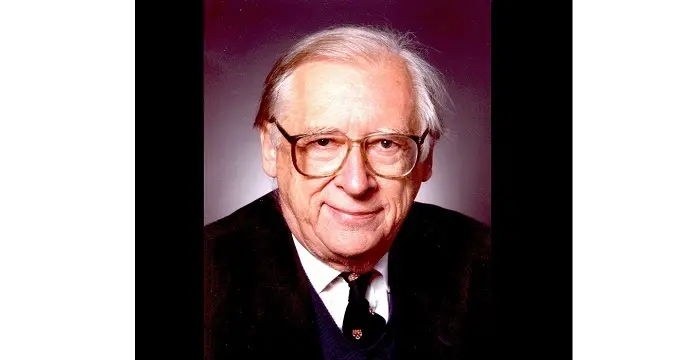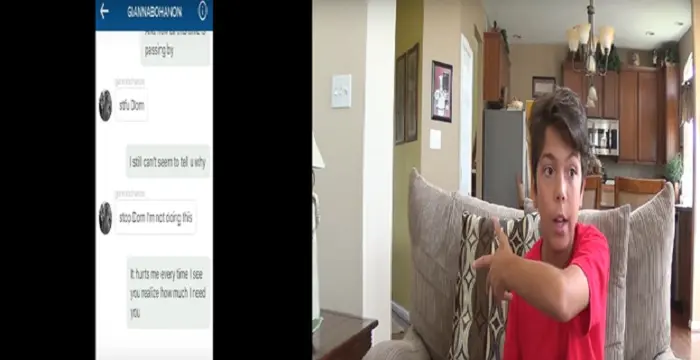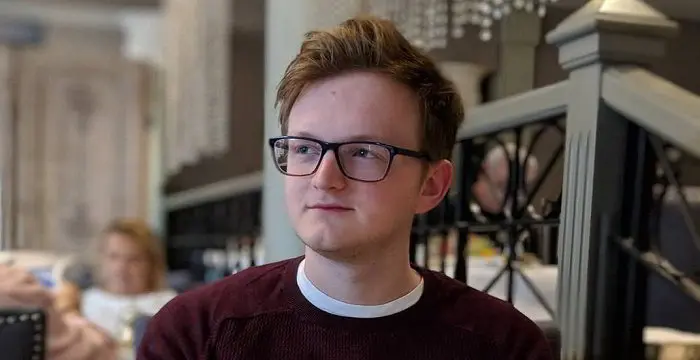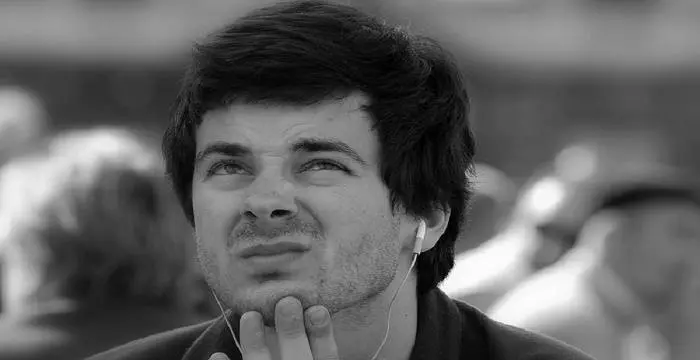
John A Pople - Scientists, Timeline and Childhood
John A Pople's Personal Details
John A Pople was an English theoretical chemist who won the Nobel Prize in Chemistry in 1998
| Information | Detail |
|---|---|
| Birthday | October 31, 1925 |
| Died on | March 15, 2004 |
| Nationality | British |
| Famous | Scientists, Chemists |
| Spouses | Joy Bowers (m. 1952) |
| Birth Place | Burnham-on-Sea, United Kingdom |
| Gender | Male |
| Sun Sign | Scorpio |
| Born in | Burnham-on-Sea, United Kingdom |
| Famous as | Chemist |
| Died at Age | 78 |
// Famous Chemists
Henry Cavendish
Henry Cavendish was a theoretical chemist and physicist, renowned for discovery of hydrogen and calculation of the mass of earth. To know more about his childhood, profile, timeline and career read on
Walter Kohn
Nobel Laureate Walter Kohn was an Austrian-born American theoretical chemist and physicist. Check out this biography to know about his childhood, life, achievements, works & timeline.
Jabir Ibn Hayyan
Jabir Ibn Hayyan was a medieval era polymath. Check out this biography to know about his life, works and achievements.
John A Pople's photo
Who is John A Pople?
John A. Pople was an English theoretical chemist who, along with Walter Kohn, won the Nobel Prize in Chemistry in 1998 for the development of computational methods in quantum chemistry. Pople’s research made it possible to predict a large variety of chemical phenomena through theoretical calculations. Also, his method allowed calculation of the bonding of atoms in molecules. His methods are used by thousands of scientists in universities and industry around the world to study a vast range of problems in chemistry and biochemistry. Pople’s interest in mathematics and science began as early as when he was 12. A scholarship helped him to study at the Trinity College, in Cambridge. After completing his studies, Pople took up a lectureship at the Cambridge. He briefly worked at the National Physics Laboratory before moving to United States of America where he worked at the Carnegie Mellon Institute. It was at the Carnegie that Pople did his major work. He is credited for making major scientific contribution in four different areas: statistical mechanics of water, nuclear magnetic resonance, theory of approximate molecular orbital calculations, and ab initio quantum chemistry methods.
// Famous Scientists
Juliane Koepcke
Juliane Koepcke is a German-Peruvian biologist, who was the lone survivor among the 92 passengers and crew of the ill-fated LANSA Flight 508 that crashed in the Peruvian rainforest on 24 December 1971. Know more about her life in this biography.
Henry Cavendish
Henry Cavendish was a theoretical chemist and physicist, renowned for discovery of hydrogen and calculation of the mass of earth. To know more about his childhood, profile, timeline and career read on
Konstantin Tsiolkovsky
Konstantin Tsiolkovsky was a Russian rocket scientist and a pioneer of astronautics. This biography provides detailed information about his childhood, family, personal life, career, achievements, etc.
Childhood & Early Life
John Anthony Pople was born on October 31, 1925 in Burnham-on-Sea, Somerset, England, to Keith Pople and Mary Jones. His father owned a men’s clothing store in Burnham.
After having attended a preparatory school in Burnham, Pople enrolled at the Bristol Grammar School in 1936. Two years later, when he was introduced to algebra, he drew a deep affinity for mathematics. In no time, he mastered the subject, way ahead of his school curriculum and started doing research projects on algebra. This early experiences instilled in young Pople the acumen required for research.
Pople’s proficiency at mathematics was soon discovered by his teachers and parents when he turned in a perfect paper for an unusually difficult test. Watching his talent, the school prepared him for a scholarship in mathematics at Cambridge University which he eventually won in 1943
From 1943, Pople attended Trinity College, Cambridge. He received his Bachelor of Arts degree in 1946. Meanwhile, from 1945 to 1947, he took up work at the Bristol Aeroplane Company.
Determined to use his mathematical skills in a branch of science, he decided to return to Cambridge and resume his studies. In 1947, he returned to Cambridge and began a career in mathematical science. He was awarded his PhD in mathematics in 1951 for his paper on statistical mechanics of water. This work which he had done under the supervision of John Lennard Jones remained the standard for many years.
While at the Cambridge, he took as many courses in science as he could, including quantum mechanics, fluid dynamics, cosmology and statistical mechanics.
Career
After obtaining his Ph.D, John Pople served as a research fellow at Trinity College, Cambridge in 1951. Three years later, he was appointed as a lecturer in the mathematics faculty at Cambridge. He planned to develop mathematical models for stimulating a whole chemistry.
By the end of 1955, he developed an interest in nuclear magnetic resonance (NMR), which was emerging as a powerful technique for studying molecular structure. He spent the summers of 1956 and 1957 researching at the National Research Council in Ottawa, Canada, working on the theoretical background of NMR.
By 1958, Pople had turned from a mathematician to a practising scientist. Dissatisfied with his position at Cambridge, he moved to the National Physical Laboratory, where he took up the position of head of the new basics physics division. However, his stay at the National Physical Laboratory was short-lived as his position demanded too much administrative and institutional work which interfered with his research work.
While serving at the National Physics Laboratory, he spent a year in sabbatical at the Carnegie Mellon University in USA from 1961 to 1962. Impressed by the opportunities that the USA forwarded in chemical research, he resolved to move to United States permanently which he eventually did in 1964. Though Pople remained in USA for the rest of his life, he retained his British citizenship.
Meanwhile in 1959, he co-authored a textbook on ‘High Resolution Nuclear Magnetic Resonance’ with W.G. Schneider and H.J. Bernstein. The book underlined the theory of nuclear magnetic resonance.
In USA, he accepted the position of a professor in chemical physics at Carnegie Mellon University in Pittsburgh, Pennsylvania. It was there that Pople returned to some of the fundamental problems of electronic structure that he had envisioned in Cambridge. He carried out almost all his scientific work while at the university.
His research mainly revolved around applying the complicated mathematics of quantum mechanics to study the chemical bonding between atoms within molecules. Though it seemed problematic initially, with the development of powerful computers, new opportunities opened up.
In 1960s, he initiated the development of a sophisticated computational method, called ab initio quantum chemistry method that used basis sets of either Slater type orbitals or Gaussian orbitals to model the wave function. The computer program was designed to perform quantum-mechanical calculations, providing quick and accurate theoretical estimates of the properties of molecules and of their behaviour in chemical reactions. Though the computational method initiated by Pople was highly expensive initially, the advent of high speed microprocessors made them feasible.
Additionally, he played an instrumental role in the development of one of the most widely used computational chemistry packages, the Gaussian suite of programs. Today, Gaussian has become an integral part of chemical laboratories throughout the world and has become a basic tool in quantum-chemical studies.
Gaussian is one of the most important contributions by Pople. It is a concept of a model chemistry whereby a method is rigorously evaluated across a range of molecules. He came up with and developed the quantum chemistry composite methods such as Gaussian-1 (G1) and Gaussian-2 (G2). Thanks to the computational model, a better understanding of interstellar matter and the effect of pollutants on the environment have been devised. Also, it has helped in simulating the effectiveness of new drugs.
In 1993, Pople moved to Northwestern University in Evanston, Illinois where he served as the Trustee Professor of Chemistry until his death.
Major Works
Pople’s is best remembered as a pioneer in the field of quantum chemistry. He provided methods to calculate the bonding of atoms in molecules. His best bit came when he developed a computer program called Gaussian, which allowed the theoretical study of molecules, their properties and how they linked together in chemical reactions. Till date, Pople’s method is used by thousands of scientists in universities and industry around the world to study a vast range of problems in chemistry and biochemistry. With the aid of computer simulations, chemists can now predict how chemical substances will react with each other, in a way that is comparable to the methods used to solve elaborate mathematical equations to make weather forecasts, and calculate the structural integrity of bridges and the aerodynamic characteristics of aeroplanes.
Awards & Achievements
In 1998, Pople was bestowed with the Nobel Prize in Chemistry for his development of the computational methods of quantum chemistry. He shared the prize with Walter Kohn who had done remarkable work in the development of density-functional theory.
He was elected as a Fellow of the Royal Society in 1961. He was made a founding member of the International Academy of Quantum Molecular Science.
In 2002, he received the prestigious Copley Medal
In 2003, he was made a Knight Commander (KBE) of the Order of the British Empire by Queen Elizabeth II.
Other awards won by him include Wolf Prize in Chemistry, Irving Langmuir Award, Mayhew Prize and Davy Medal.
Personal Life & Legacy
In 1952, Pople married Joy Bowers, his professional music teacher, whom he courted for long. The two remained together until her death in 2002. They were blessed with a daughter, Hilary and three sons, Adrian, ark and Andrew.
He died of liver cancer on March 15, 2004, in Chicago, at the age of 78.
To honour his contribution to the scientific world, an IT room in Bristol Grammar School and a scholarship at the institution have been named after him. Additionally, a supercomputer at the Pittsburgh Supercomputing Center bears his name.
// Famous Scorpio Celebrities peoples
Teddy Zois
Teddy Zois is an American Musical.ly star and social media personality. Let’s have a look at his family and personal life including age, date of birth, net worth, and fun facts.
Kyla Cole
Kyla Cole is a Slovak glamour model and former television presenter. This biography profiles her childhood, life, modeling career, achievements and timeline.
Dominic Tracy
Dominic Tracy is an American YouTube Star. Let’s take a look at his family & personal life including age, date of birth, girlfriends, net worth, and fun facts.
John A Pople's awards
| Year | Name | Award |
|---|---|---|
Other | ||
| 0 | 1998 - Nobel Prize in Chemistry | |
| 0 | 1992 - Wolf Prize in Chemistry | |
| 0 | 2002 - Copley Medal | |
| 0 | 1988 - Davy Medal | |
John A Pople biography timelines
- // 31st Oct 1925John Anthony Pople was born on October 31, 1925 in Burnham-on-Sea, Somerset, England, to Keith Pople and Mary Jones. His father owned a men’s clothing store in Burnham.
- // 1936After having attended a preparatory school in Burnham, Pople enrolled at the Bristol Grammar School in 1936. Two years later, when he was introduced to algebra, he drew a deep affinity for mathematics. In no time, he mastered the subject, way ahead of his school curriculum and started doing research projects on algebra. This early experiences instilled in young Pople the acumen required for research.
- // 1943Pople’s proficiency at mathematics was soon discovered by his teachers and parents when he turned in a perfect paper for an unusually difficult test. Watching his talent, the school prepared him for a scholarship in mathematics at Cambridge University which he eventually won in 1943
- // 1943From 1943, Pople attended Trinity College, Cambridge. He received his Bachelor of Arts degree in 1946. Meanwhile, from 1945 to 1947, he took up work at the Bristol Aeroplane Company.
- // 1947 To 1951Determined to use his mathematical skills in a branch of science, he decided to return to Cambridge and resume his studies. In 1947, he returned to Cambridge and began a career in mathematical science. He was awarded his PhD in mathematics in 1951 for his paper on statistical mechanics of water. This work which he had done under the supervision of John Lennard Jones remained the standard for many years.
- // 1951After obtaining his Ph.D, John Pople served as a research fellow at Trinity College, Cambridge in 1951. Three years later, he was appointed as a lecturer in the mathematics faculty at Cambridge. He planned to develop mathematical models for stimulating a whole chemistry.
- // 1952 To 2002In 1952, Pople married Joy Bowers, his professional music teacher, whom he courted for long. The two remained together until her death in 2002. They were blessed with a daughter, Hilary and three sons, Adrian, ark and Andrew.
- // 1958By 1958, Pople had turned from a mathematician to a practising scientist. Dissatisfied with his position at Cambridge, he moved to the National Physical Laboratory, where he took up the position of head of the new basics physics division. However, his stay at the National Physical Laboratory was short-lived as his position demanded too much administrative and institutional work which interfered with his research work.
- // 1959Meanwhile in 1959, he co-authored a textbook on ‘High Resolution Nuclear Magnetic Resonance’ with W.G. Schneider and H.J. Bernstein. The book underlined the theory of nuclear magnetic resonance.
- // 1961He was elected as a Fellow of the Royal Society in 1961. He was made a founding member of the International Academy of Quantum Molecular Science.
- // 1993In 1993, Pople moved to Northwestern University in Evanston, Illinois where he served as the Trustee Professor of Chemistry until his death.
- // 1998In 1998, Pople was bestowed with the Nobel Prize in Chemistry for his development of the computational methods of quantum chemistry. He shared the prize with Walter Kohn who had done remarkable work in the development of density-functional theory.
- // 2002In 2002, he received the prestigious Copley Medal
- // 2003In 2003, he was made a Knight Commander (KBE) of the Order of the British Empire by Queen Elizabeth II.
- // 15th Mar 2004He died of liver cancer on March 15, 2004, in Chicago, at the age of 78.
// Famous British peoples
Wentworth Miller
Wentworth Miller is an American actor and screenwriter who achieved recognition for his role in the TV series ‘Prison Break’.
Sophie Reade
Sophie Victoria Reade is a British model and reality show star. Let’s take a look at her family and personal life, including her age, birthday, boyfriends, and some interesting facts.
Josh Temple
Check out all that you wanted to know about Josh Temple (Slogoman), the famous British YouTube Personality; his birthday, his family and personal life, his girlfriends, fun trivia facts and more.
Yammy Xox
Check out all that you wanted to know about Yammy Xox, the famous British YouTube Personality; her birthday, her family and personal life, her boyfriends, fun trivia facts and more.
Grian
Grian is an English YouTube gamer and social media influencer. Check out this biography to know about his birthday, childhood, family life, achievements and fun facts about him.
Benjamin Atkinson
Benjamin Atkinson is the son of the world-renowned British actor and comedian, Rowan Atkinson. Check out this biography to know about his childhood, family, personal life, including his age, birthday, etc.
John A Pople's FAQ
What is John A Pople birthday?
John A Pople was born at 1925-10-31
When was John A Pople died?
John A Pople was died at 2004-03-15
Which age was John A Pople died?
John A Pople was died at age 78
Where is John A Pople's birth place?
John A Pople was born in Burnham-on-Sea, United Kingdom
What is John A Pople nationalities?
John A Pople's nationalities is British
Who is John A Pople spouses?
John A Pople's spouses is Joy Bowers (m. 1952)
What is John A Pople's sun sign?
John A Pople is Scorpio
How famous is John A Pople?
John A Pople is famouse as Chemist















